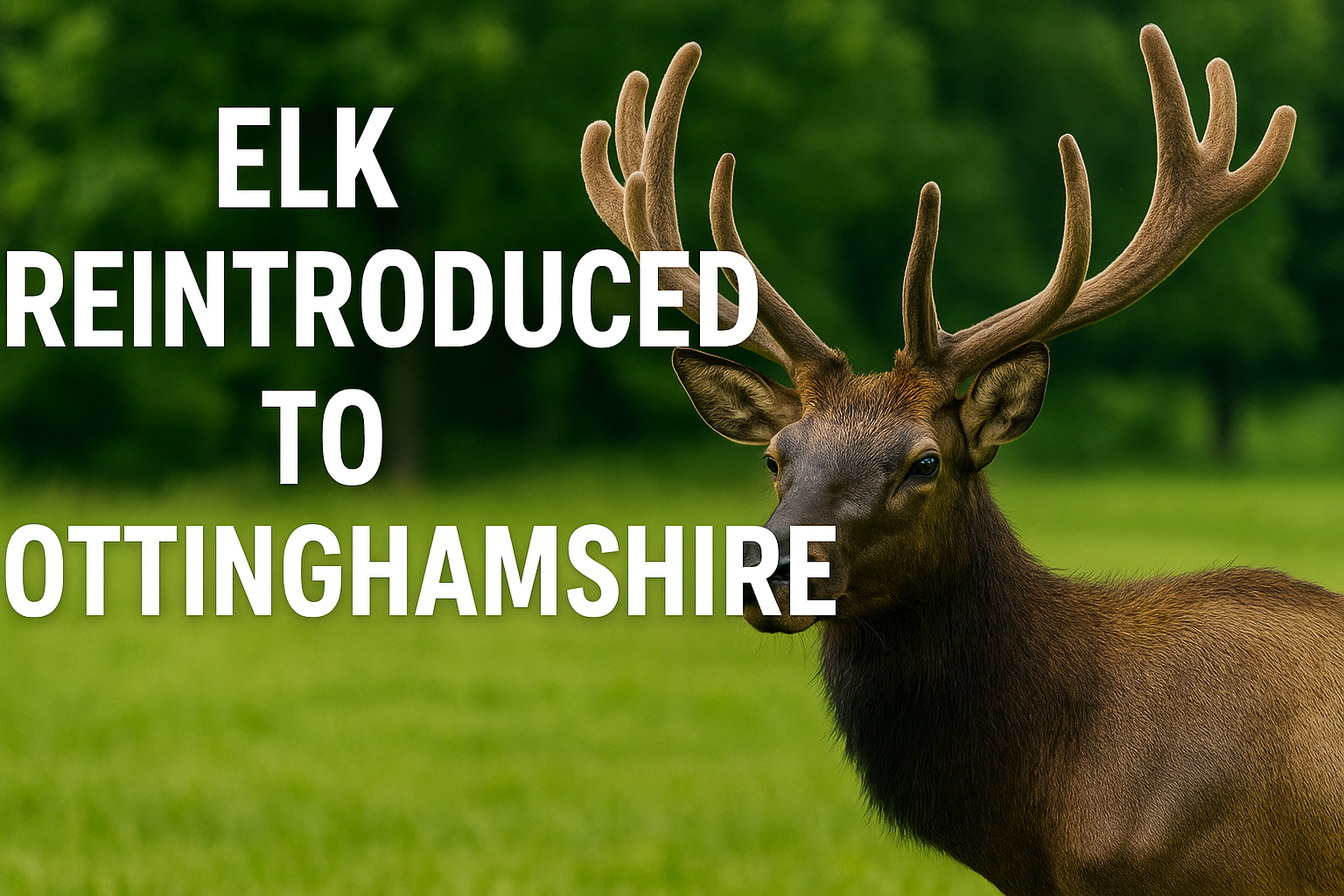Nottinghamshire, a county rich in forests, nature reserves, and historical landmarks, is now considering the possibility of reintroducing elk. Once a prominent part of the UK’s wild landscape, elk (also known as wapiti in North America) have been absent from the British Isles for centuries.
Their potential return could bring ecological benefits, enhance biodiversity, and provide new opportunities for wildlife tourism. But what exactly are elk, and why are they being considered for reintroduction to Nottinghamshire?
What Are Elk?
Elk are large herbivores that belong to the Cervidae family, which also includes deer and moose. They are native to North America and parts of East Asia, but they once roamed freely across the UK before being hunted to extinction in the medieval period.
Unlike red deer, elk are much larger and can weigh over 700 pounds (300 kg) in some cases. They have distinctive antlers that grow annually and are shed in winter.
These majestic creatures are known for their impressive size and distinctive bugling call, especially during mating season. Elk typically thrive in forests, grasslands, and wetlands, and they play an important role in maintaining ecosystem balance by grazing on vegetation and acting as prey for larger predators.
Why Elk Could Be Reintroduced to Nottinghamshire
There are several compelling reasons why elk might be reintroduced to Nottinghamshire:
- Ecological Balance: Elk were once an integral part of UK ecosystems, and their return could help restore a natural balance. Their grazing helps manage vegetation, particularly in areas where certain plant species have become overgrown. By grazing on certain plants, elk can create more diverse habitats that benefit other wildlife, such as birds, insects, and small mammals.
- Biodiversity: The reintroduction of elk could help to increase the diversity of flora and fauna in Nottinghamshire. Elk’s presence could encourage the regeneration of certain plant species that are beneficial to other animals, promoting a healthy and thriving ecosystem.
- Tourism and Education: Reintroducing elk to Nottinghamshire could boost ecotourism and provide unique educational opportunities. Wildlife enthusiasts and photographers would be drawn to the area to observe these magnificent animals in their natural habitat. This could stimulate local economies through tourism and inspire a deeper understanding of conservation efforts.
- Conservation Goals: Rewilding initiatives, such as the reintroduction of elk, are part of broader conservation goals to restore biodiversity and natural habitats in the UK. By reintroducing apex herbivores like elk, conservationists aim to repair degraded landscapes, allowing for more resilient ecosystems in the long term.
- Increased Public Awareness: The return of elk would spark discussions about the importance of biodiversity, conservation, and the role humans play in protecting natural habitats. It could also foster a sense of pride in local communities who are involved in the conservation process.
Challenges of Elk Reintroduction
While the benefits are significant, the reintroduction of elk to Nottinghamshire would come with challenges. These challenges include:
- Habitat Requirements: Elk require vast expanses of forested land and grazing areas. Ensuring that Nottinghamshire has the appropriate habitat to support them could be a logistical challenge.
- Conflict with Agriculture: Elk could potentially damage crops, fences, and young trees, which might lead to conflicts with local farmers and landowners. Managing these interactions would require careful planning and collaboration with stakeholders.
- Predation and Disease: Elk could face threats from predators, such as wild dogs, and could introduce diseases to local wildlife populations. There would need to be careful monitoring of elk populations and the health of surrounding ecosystems.
- Public Perception: Some members of the public may be opposed to the reintroduction of elk, citing concerns about safety or the potential for negative impacts on other species. Ensuring that there is widespread support and education on the benefits of rewilding would be crucial.
What Would the Elk Reintroduction Project Look Like?
If the elk were to be reintroduced to Nottinghamshire, it would likely follow a phased process. Initially, the project would involve careful habitat assessments to ensure that elk could be supported in the area without disrupting existing wildlife populations.
Conservationists would also need to monitor the health of the elk and surrounding ecosystems. The project might involve the gradual release of a small number of elk into designated areas, with strict monitoring in place.
Conclusion
The reintroduction of elk to Nottinghamshire could represent a bold and exciting step in the UK’s rewilding efforts. With careful planning, collaboration, and consideration of the challenges involved, elk could become a symbol of wildlife conservation and a reminder of the rich biodiversity that once thrived in the British countryside.
FAQ’s
Are elk dangerous to humans?
Elk are generally not aggressive toward humans, but they can become defensive if they feel threatened, especially during mating season. It’s important to maintain a safe distance when observing them in the wild.
How many elk will be reintroduced to Nottinghamshire?
The number of elk reintroduced would depend on habitat suitability and ecological factors. Typically, reintroductions begin with small, controlled groups to assess their impact on the environment.
What will the impact be on local wildlife?
Elk’s return could have both positive and negative effects on local wildlife. While they may compete with smaller herbivores for food, their grazing habits can also promote the growth of diverse plant species, benefiting other animals.
Also Read:- 7 Succulents That Look Like a Snake Plant—Easy & Stylish Alternatives
